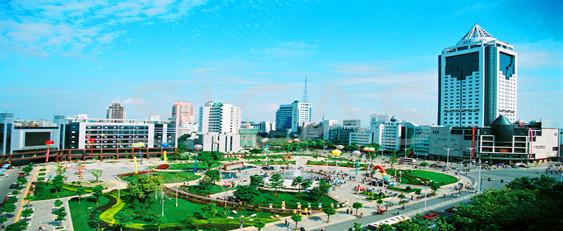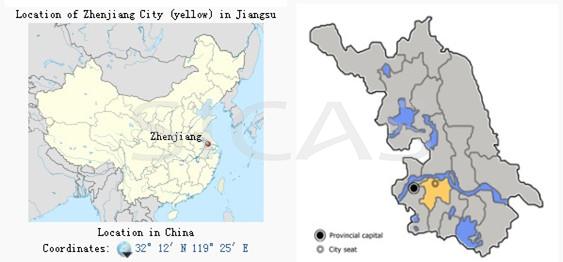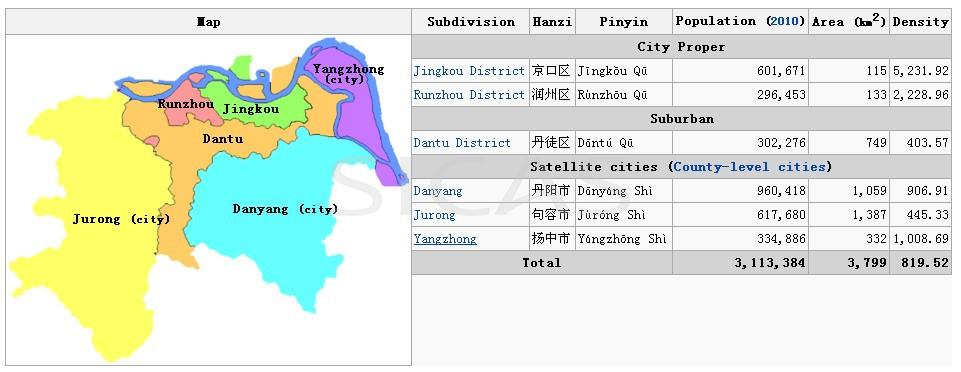 |
Zhenjiang is a prefecture-level city in the southwest of Jiangsu province in the eastern People's Republic of China (PRC). Sitting on the southern bank of the Yangtze River, it borders the provincial capital of Nanjing to the west, Changzhou to the east, and Yangzhou across the river to the north.
Zhenjiang serves as an important transportation hub in the Yangtze River Delta. Zhenjiang Port, one of the 5 major ports in Jiangsu (the other four are Nanjing Port, Suzhou Port, Nantong Port and Lianyungang Port), is an important transfer port for goods from the upper and middle parts of the Yangtze River. It is 90 km away from Nanjing Lukou Airport and 60 km from Changzhou Luosuye Airport.
Climate Zhenjiang was the seat of feudal domains from the 8th century BC onwards, known first as Zhufangyi and later as Kuyangyi. After it was captured by Qin Shi Huang, the first Chinese emperor, in 221 BC, it became a county town and was given the name Dantu.
Zhenjiang suffered from strife during the First Opium War (1839–42) when it was captured by the British at the Battle of Chinkiang on 21 July 1842, and again during the Taiping Rebellion (1850–1864). Zhenjiang declined economically with the closure of the northern portion of the Grand Canal in the 1850s, and the obstruction of the entrance to the southern canal in the 20th century.
From 1928 to 1949, during the Nationalist (Guomindang) regime of Chiang Kaishek, Zhenjiang was made the capital of Jiangsu Province, while Nanjing (the present-day capital of Jiangsu) served as the capital of China. Zhenjiang is still one of China's busiest ports for domestic commerce, serving as a hub for trade between northern Jiangsu and Anhui provinces, and Shanghai. The trade mostly consists of grain, cotton, oils, and lumber. The other main industries are mostly in the field of food processing and paper pulp manufacturing. It is famous among Chinese for its heroic resistance against the British (in 1842) and the Japanese (in the Second World War).
These are further divided into 77 township-level divisions, including 66 towns, 1 township and 10subdistricts.
Map of Zhenjiang City (click to see)
|










